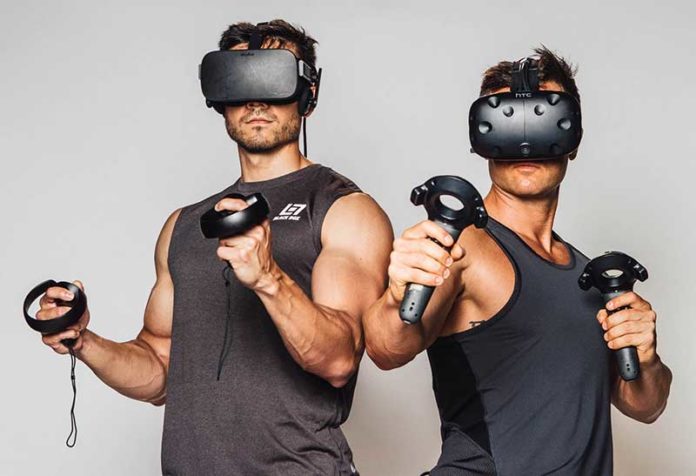Dance Dance Revolution, the popular dancing game created by Konami, was the first in the arcades to popularize gamification of physical fitness. An announcer encouraged you to try your best, and grades at the end helped pinpoint areas for improvement. Every credit you spent taught you to progress through multiple difficulty levels demanding a different kind of agility. A variety of songs kept the game interesting and attracted a wide audience of fans.
Since then, gamification has been used inside the arcade and in real life to promote fitness through apps and social platforms. Nerd fitness routines on Lifehacker are based on Konami codes, and other routines challenge you to push yourself during load times.
We do this because fitness is hard. It’s rewarding, but it’s never easy. Gamification represents a new landscape for achieving fitness goals.
Gamification Defined
In 2008, the term gamification really began to take off as a concept. It described using elements of progression like that of a role-playing video game. We all know work is hard, and working out can be very difficult. Especially when you’re just starting out. Whether you’re overweight, or looking to tone up, working out is literally painful for beginners.
Gamification evolved as a method for fitness apps to lightly encourage users to do more. Peer pressure was the most common tactic at first, but the ideas soon grew into leaderboards and achievements. Some apps even offered real world prizes, typically in the form of discounts or giveaways for hitting certain goals.
One of the problems with this idea was the long term. Think of it this way: what happens when you beat the game? The answer is complex, and many fitness apps fail to add meaningful achievements. They are great for getting started, but if you’re not seriously motivated then you may have trouble following through.
VR and Stat Tracking
Gamification relies on the ability to gather user statistics in order to see some kind of progression. VR is the perfect vehicle for that progression. A setup with a built-in treadmill, such as Omni, may track number of footsteps and measure your speed within the environment. With VR, your heart rate can be one of many important statistical indicators that you’re actually improving endurance or stamina or strength.
These statistics can be tied to a user account, so you feel the need to go back and improve. If you’re trying to improve because an app is giving you imaginary points, the experience feels very disconnected after a while. Your brain responds better to real life rewards. When you maintain a user account, in an active and ever changing virtual world, you have more incentive to continue pushing on. Just like the old school arcades, having the high score and maintaining that position is meaningful.
Final Thoughts
Immersion is key, which is why VR fitness is so provocative. That study, conducted by Richard Stålnacke Larsson, points out that there’s room for improvement in this gamification idea. Users need continuous feedback to find real value. VR solves many of these challenges. It offers the ability to customize a user’s profile, and the fitness center can act as a social platform for users to connect in the real world.
If more fitness centers were to adopt these platforms, users would see value in going back. The gym would evolve to provide a much more immersive experience with meaningful statistics you can use to evaluate your health and fitness. Imagine tracking your heart rate year over year as you do a 5-mile nature trek in VR. In fitness, we talk a lot about “results”. We want to see results, and it often takes a while to show in our body. VR can be the vehicle for us to see those results, even when we can’t see them yet.











